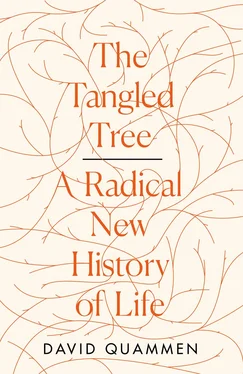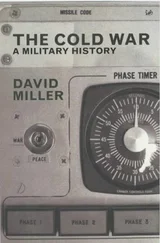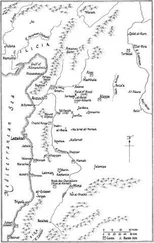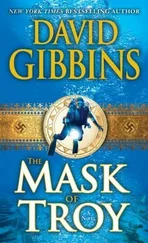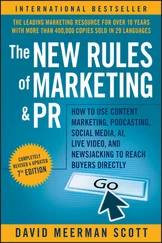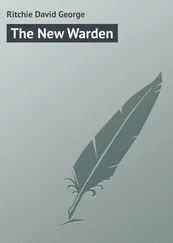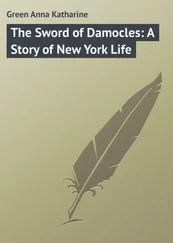This skepticism, this taxonomist’s despair, had been wiggling up inside van Niel for a long time. Two decades earlier, even as he was signing onto that first elaborate proposal, he had confessed his gloom to Stanier in a letter: “ Many, many years ago I often went around with a sense of futility of all our (my) efforts. It made me sick to go around in the laboratory (this was in Delft) and talk and think about names and relations of microorganisms.” Was any of it real? Was there any value to putting bacteria into labeled boxes? “During those periodsI would go home after a day at the lab, and wish that I might be employed somewhere as a high-school teacher.” Not that he would enjoy such teaching, he realized, but at least “it would give me some assurances that what I was doing was considered worth-while.” Nowadays we might see that as a signal of bipolar disorder, but it’s just as likely that van Niel simply viewed bacterial taxonomy with great clarity.
Under their revised spellings, prokaryote and eukaryote , those two became enshrined for a generation as the most fundamental categories of life. Eukaryotes had cell nuclei. Prokaryotes did not. That dichotomy seemed to represent, as Stanier and his coauthors had written, the greatest single evolutionary divide in the living world. There were two basic kinds of creature, the proks and the euks, and there was nothing between.
What makes this worth knowing is that Carl Woese proved it wrong.
18

As of early 1976, with Ken Luehrsen and others still helping, Woese had done his unique form of catalog analysis on samples from roughly thirty species, using differences in ribosomal RNA molecules to measure their relatedness. Most were prokaryotes, but he also looked at a few eukaryotes (which carried that slightly different molecule in their ribosomes, 18S rRNA instead of 16S), including yeast, for purposes of gross comparison. He could tell a prok from a euk just by inspecting the spots on a sheet of film. And he was eager to see those “unusual bacteria,” the methanogens, about which Ralph Wolfe had alerted him.
The tricky thing about methanogens was that, since oxygen poisoned them, they were hard to grow in a laboratory. But Wolfe’s lab team included an ingenious doctoral student, Bill Balch, who had solved that problem by devising a way to culture methanogens in pressurized aluminum tubes with black rubber stoppers, and using syringes to move things in and out. Balch gave the methanogens an atmosphere of hydrogen and carbon dioxide instead of oxygen, plus a liquid growth medium, and they thrived. Woese sent his own postdoc, a rangy young man named George Fox, trained in chemical engineering, to work with Balch on growing some of these methanogens and tagging them with radioactive phosphorus. Fox, Ken Luehrsen, and other members of the Woese lab then combined their efforts on the rest of the process: extracting the radioactive RNA, purifying it to get concentrations of 16S and 5S molecules, chopping those molecules into pieces, running the electrophoresis to separate the fragments, and printing the spots onto films. Their first methanogen carried a formal name so long ( Methanobacterium thermoautotrophicum ) that even Woese himself dismissed that as “a fourteen-syllable monstrosity” and preferred using a shorter label, denoting the particular laboratory strain: delta H. Examining its primary fingerprint on his light board, Woese noticed something odd.
He was practiced enough by now at reading such fingerprints that he could immediately recognize a certain pair of small fragments, common to all bacteria, that “screamed out” their membership in the prokaryotes. He looked for them on the primary film from delta H. They were missing. Intrigued but patient, he waited for the secondary fingerprint, with the fragments pulled sideways to reveal more detail. He got that from his technician several days later. On June 11, 1976, he taped the primary film up on his light board again, with the secondary now in front of him on the light table, and began trying to interpret what he saw. He intended, as usual in this stage of the process, to use the secondary film as a guide for inferring the base sequences of the fragments in the primary pattern. Apart from his board and his table, the room was dark. His face, we can imagine, reflected an eerie glow. Quickly he noticed more oddities.
The two missing fragments were still missing, but it wasn’t just that. Woese turned to a different part of the pattern, expecting to see another familiar fragment—a “signature” sequence in all prokaryotes. Not there. Instead, he found a strange fragment, a longish sequence that shouldn’t have been present at all. “ What was going on?” he later recalled wondering. This methanogen rRNA just “was not feeling” prokaryotic. And the more fragments he sequenced, the less prokaryotic it felt. By this time, he knew the sequences of ribosomal RNA in bacteria so intimately that his “feel” for the molecule was a persuasive standard of normality. And something in this particular creature, delta H, was abnormal. Some bacterial fragments were appearing where expected, as expected, yes. But some others looked eukaryotic, suggesting a completely distinct form of life: a yeast, a protozoan, what? And still others were just weird. What was this RNA? he wondered, and what manner of organism did it represent? It couldn’t be from a prokaryote. It wasn’t eukaryotic. It wasn’t from Mars, because it contained too many familiar stretches of RNA code. “ Then it dawned on me,” he wrote. There was “something out there”—out there in the teeming ecosystems of planet Earth, he meant—other than prokaryotes and eukaryotes. A third form of life, separate.
Woese called this, whimsically, his “out-of-biology experience.”It would be the watershed moment of his scientific life.
19

After his death in December 2012, Woese’s files of scientific correspondence, manuscripts, journal articles, and other materials went to the University of Illinois Archives to be indexed, curated, and preserved. The archives are held in several different locations, one of which is the Archives Research Center, a sort of annex, housed in an old, barnlike building of red brick on Orchard Street near the south edge of the campus. A sign in front identifies this, confusingly but historically, as the Horticulture Field Laboratory; a bank of yew bushes and a riot of hostas guard the entrance. Inside, filed neatly in thirty-four boxes that can be accessed by request, are the Carl Woese Papers. I was working there at a table one hot July afternoon, reading through letters, looking for clues about the human side of this peculiar man, when John Franch arrived, wearing a dark T-shirt and a ball cap. Franch is the assistant archivist who was sent to clean out Woese’s lab after the funeral, and who knows the material found there better than anyone else. He had heard about my interest and wanted to show me something.
He led me toward the back of the building, where the roof arches high, and unlocked a door. This was one of the “vaults,” he told me, that formerly served for storing fruit—apples in particular—from the horticultural research orchards from which Orchard Street got its name. At one point, there were 125 varieties of apple grown just behind the building, and they came in by the basket and the crate to be stored here or pressed for cider and vinegar. Beyond the door, we entered an air-conditioned room, empty of apples now but lined along its left side with tall metal shelves, along its right side with tables. The shelves held hundreds of large, flat yellow boxes—the original packaging of Kodak medical X-ray films—representing the library of Woese’s RNA sequencing fingerprints. Each box was labeled along its edge with a date and the organism whose fragments were depicted.
Читать дальше
